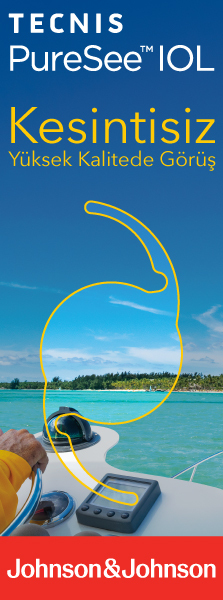2Elazığ Fırat University, Eye Clinic, Türkiye DOI : 10.37844/TJ-CEO.2025.20.17 Aim: To evaluate retinal pathologies postoperatively in cases with advanced cataract where fundus cannot be visualised.
Material and Method: A retrospective examination was made of patients whom the fundus could not be evaluated preoperatively because of advanced cataract, who underwent cataract surgery and had a normal B-scan ultrasonography examination between September 2020 and December 2023. The demographic data and systemic diseases of the patients were recorded. A detailed ophthalmological examination was performed, including fundus examination, and macular optic coherence tomography scans were obtained preoperatively and within 1 month postoperatively. Retinal pathologies in the eye with advanced cataract were identified and potential risk factors were evaluated.
Results: Evaluations were made of 280 eyes of 280 patients; 141 (50.4%) females and 139 (49.6%) males with mean age of 69.09±9.84 years. Retinal pathologies were determined postoperatively in 82 (29.3%) patients, most frequently dry type AMD (n=27, 9.6%), diabetic retinopathy (n=15, 5.4%) and epiretinal membrane (n=13, 4.6%). In 69 (84.1%) of the cases determined with pathology, the same pathology was determined in the fellow eye. Retinal pathologies were seen more in patients of advanced age and in those who were diabetic (p:0.002, p:0.017, respectively). The presence of pathology in the fellow eye was determined to be a significant risk factor (p<0.001).
Conclusion: Approximately one-third of the cases with advanced cataracts in which the preoperative fundus cannot be visualised are accompanied by retinal pathologies. Advanced age, diabetes, and retinal pathology in the fellow eye were found to be significant risk factors.
Keywords : Cataract, Cataract surgery, Fundus examination, Retinopathy




